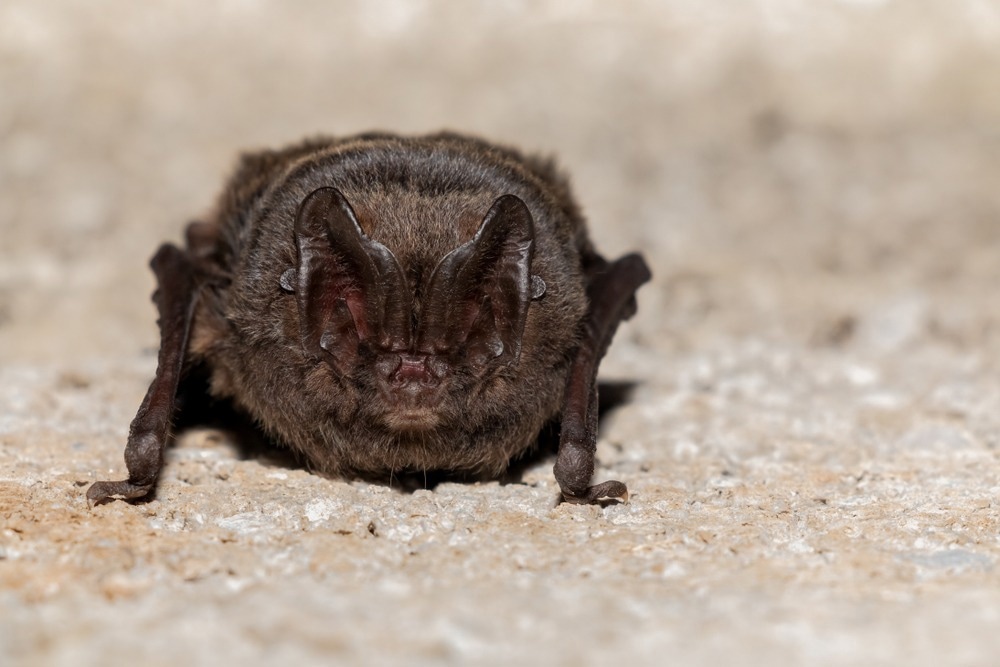Reviewed by Danielle Ellis, B.Sc.Oct 30 2023
When inquiring with a biologist about why predators do not completely eliminate their prey, they frequently point to an enduring evolutionary competition between predators and prey, wherein both sides continually develop novel strategies to outsmart one another.

Image Credit: Roziline/Shutterstock.com
The hypothesis holds particular relevance when examining bats and their primary prey: insects.
Approximately 50 million years ago, the first bats developed the remarkable ability to echolocate, enabling them to hunt in the dark. In response to this innovation, some insects evolved ears sensitive to ultrasound, allowing them to detect and evade bats.
However, as biologist and bat specialist Lasse Jakobsen, co-author of a recent study published in Current Biology, points out, if there truly is an ongoing arms race, bats should have also adapted in response to this evolutionary challenge. In their Jakobsen and his colleagues scrutinize the concept of an evolutionary arms race between bats and insects.
Additional contributors to this study include Daniel Lewanzik and Holger R. Goerlitz, affiliated with the Max Planck Institute for Biological Intelligence, as well as John M. Ratcliffe and Erik Etzler from the University of Toronto.
The primary evidence supporting the notion of an ongoing arms race lies in the fact that certain bats, specifically the barbastelles (Barbastella barbastellus), emit quieter calls when hunting, rendering them less detectable by insects. These barbastelles are approximately 20 dB quieter than other bats that prey on flying insects, resulting in sound emissions ten times lower in sound pressure.
The barbastelle is traditionally highlighted as the bat that has “struck back” at the insects.”
Lasse Jakobsen, Study Co-Author, University of Southern Denmark
However, a perplexing question arose for him and his fellow researchers: When examining the barbastelle’s near relatives, there is a scarcity of other members within this group that engage in aerial insect hunting.
Instead, these relatives primarily feed on insects that are perched on surfaces like leaves and branches, and all these species are generally less vocal than those that hunt flying insects.
Hawkers and Gleaners
As far as bat research is concerned, bats that capture insects in mid-air are classified as “hawking bats,” while those that gather insects from surfaces are referred to as “gleaning bats.” The barbastelle, in this context, belongs to the hawking bat category.
If most of the barbastelle’s family are gleaners, then their ancestor was very likely also a gleaner.”
Lasse Jakobsen, Study Co-Author, University of Southern Denmark
Therefore, it is improbable that the barbastelle's predecessor was a vociferous hawking bat that subsequently transformed into the stealthy, hushed barbastelle in response to insect auditory capabilities.
In the course of evolution, species are constrained by their ancestral traits. For instance, mammals are inherently devoid of feathers in their ancestry, which precludes their descendants from evolving feathered wings. Instead, they have developed alternative mechanisms for flight, such as modified skin between their fingers, as elucidated by Lasse Jakobsen.
However, the enigma remains: if the barbastelle’s capacity to hunt quietly in the air did not evolve as part of the ongoing arms race between insects and bats, where did this ability originate?
It is not an evolved ability. It just cannot produce louder calls than it does, because as a descendant of a gleaner it is probably morphologically limited. But it has found a niche, where it can use its low amplitude calls. It is an evolutionary coincidence; it sort of fell into this niche, where there was something to eat.”
Lasse Jakobsen, Study Co-Author, University of Southern Denmark
The Morphological Limitation
This ecological niche is inhabited by airborne, nocturnal insects endowed with the ability to detect sound, making them adept at evading nighttime bats. However, their auditory faculties fall short in perceiving the barbastelle, rendering them vulnerable to predation.
The root cause of this morphological constraint lies in the manner in which bats produce their vocalizations. The majority of bats vocalize through their mouths, enabling them to emit high-volume sounds. In contrast, many gleaning bats produce sound through their nostrils, resulting in calls that are 20 dB quieter.
So, the reason why the barbastelles are so quiet today is not an expression of an arms race between bats and insects, but rather simply an expression of the fact that it is descended from bats that cannot call as loudly as others.”
Lasse Jakobsen, Study Co-Author, University of Southern Denmark
Source:
Journal reference:
Lewanzik, D., et al. (2023) Stealth echolocation in aerial hawking bats reflects a substrate gleaning ancestry. Current Biology. doi.org/10.1016/j.cub.2023.10.014.